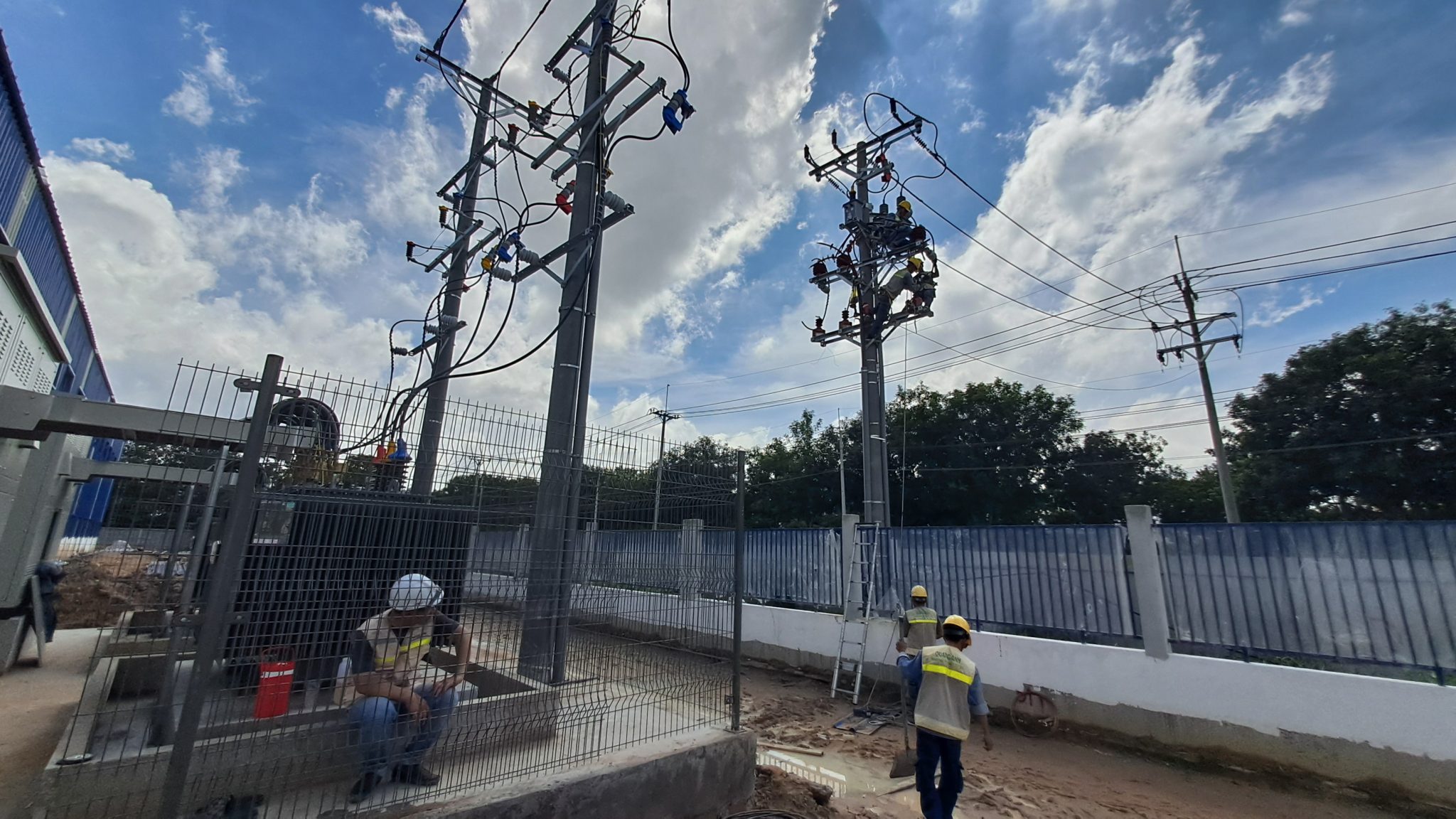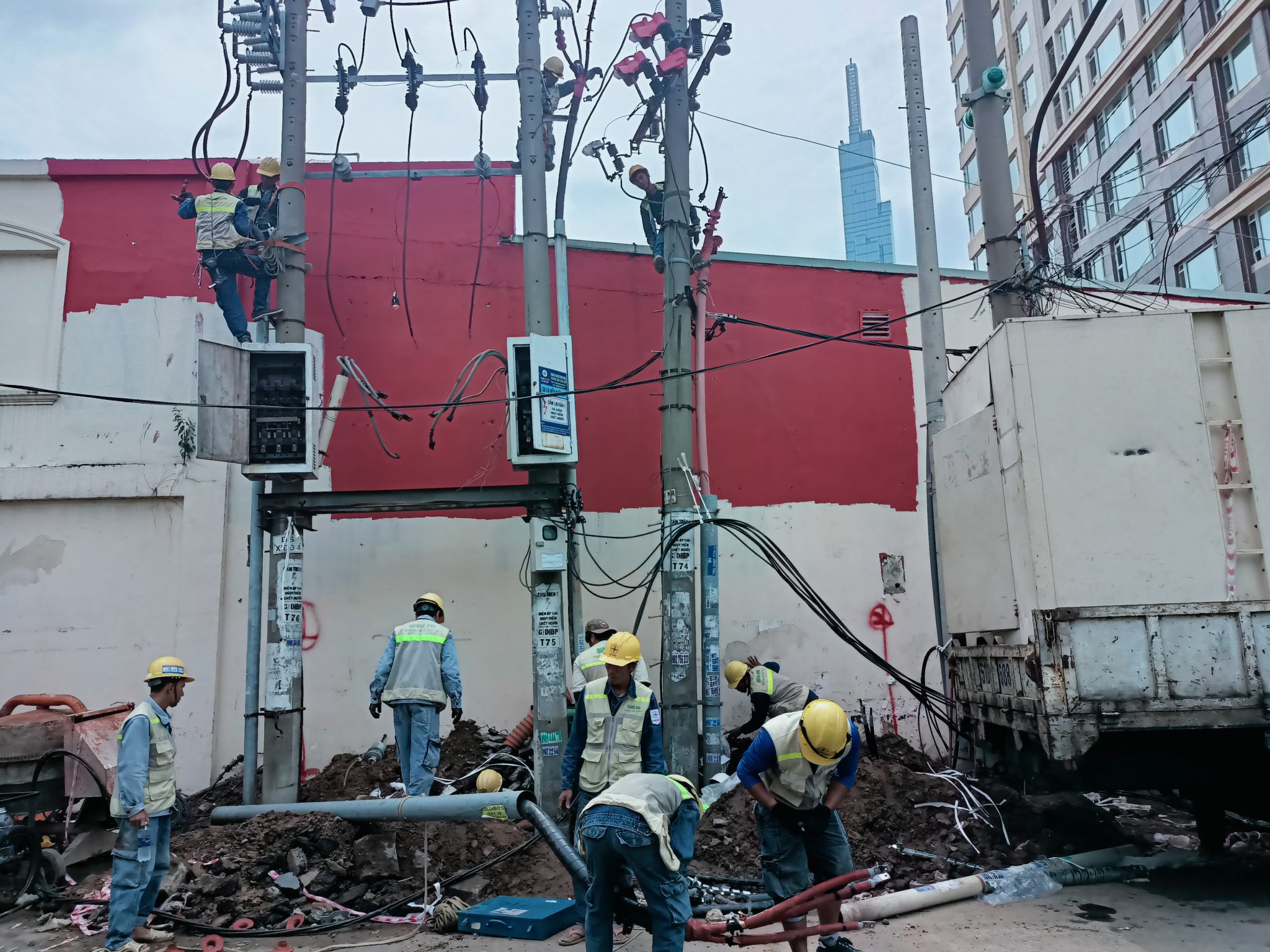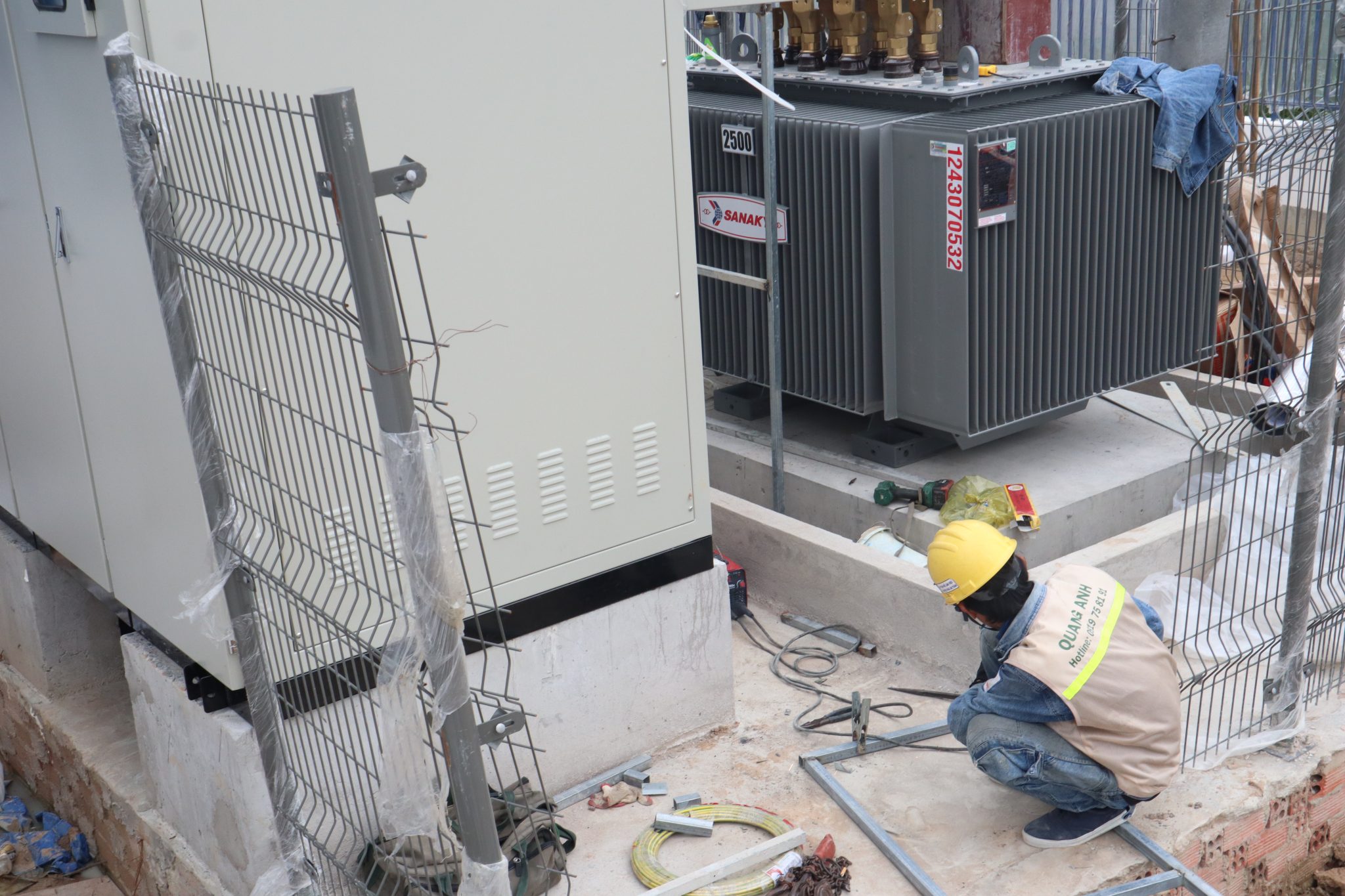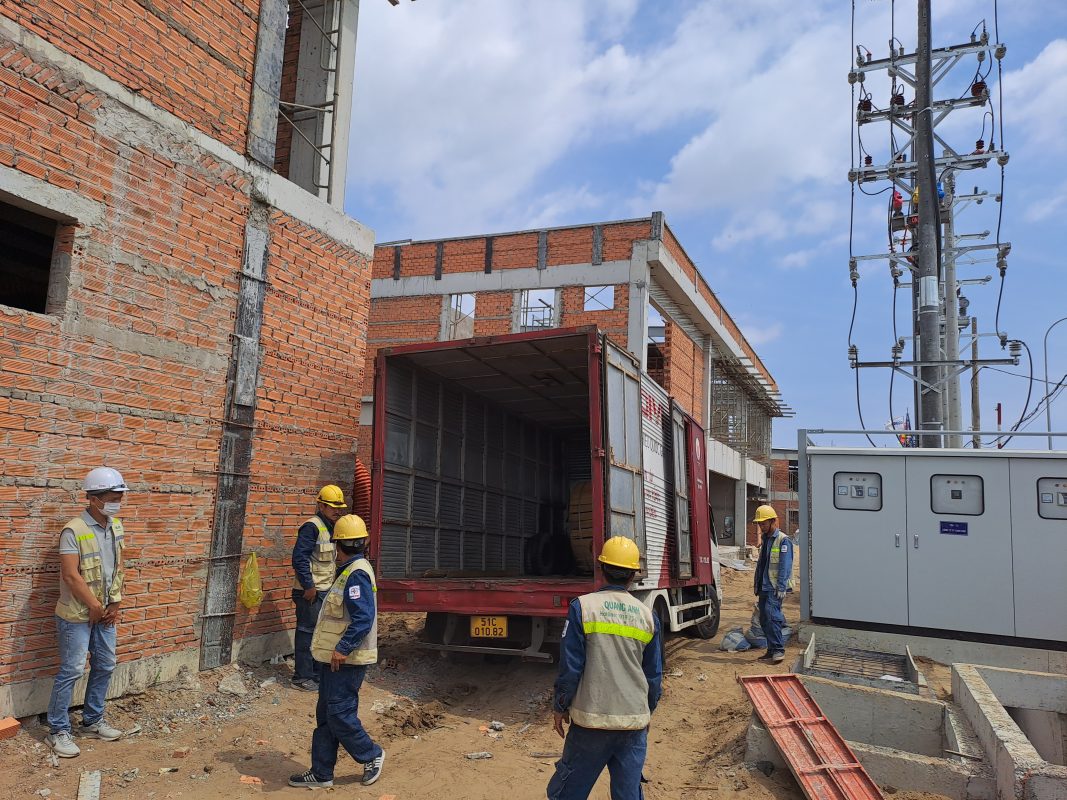Designing a factory electrical system is a complex task that demands precision and adherence to technical standards to ensure operational safety and efficiency.
Steps for Designing a Safe and Effective Electrical System
Design begins with a practical survey to gather project data such as installation area, plant size, and machinery count. Following this, both high and low voltage networks are designed by determining appropriate pole placements ensuring safe distances. Finally, industrial lighting and adjustable capacitive power systems are planned to optimize efficiency and reduce energy loss.
Designing an efficient and secure electrical system requires a methodical and detailed process. It starts with site surveys and requirement gathering to define project functionality by categorizing locations and gathering technical details like layout, dimensions, and installation points. This is crucial to accurately assess electricity needs for each area.
Next, calculating electrical loads is essential to ensure systems can meet consumption demands. This includes grouping equipment by power and function to optimize electricity distribution.
Lighting design is another critical area, where illumination levels and power capacity are calculated to select lighting fixtures that comply with TCVN standards, ensuring uniform lighting distribution while preventing energy wastage.
The placement of sockets and switches is also vital. Their location is determined based on the varied equipment requirements in areas such as workspaces, kitchens, or production zones, with considerations for the number and power capacity of needed outlets.
Choosing cables and protective devices is indispensable in electrical design. Calculating cable cross-sections based on rated current and allowable voltage drop, alongside selecting appropriate MCCB/RCBO devices, ensures system safety against electrical faults.
Designing capacitive power compensation systems is equally important for reducing the power factor to an optimal range from 0.9 to 0.95, thus minimizing energy losses. Automatic compensation cabinets are selected for flexible reactive power compensation.
Lightning and grounding systems must be meticulously designed. Lightning rods should cover the protective radius while grounding systems must achieve an earth resistance ≤10Ω for electrical safety.
Lastly, selecting transformers and backup generators with sufficient power capacity is essential to meet calculated loads, ensuring reserve power for critical loads in grid failure.
Following these detailed steps ensures a safe and effective electrical system, minimizing safety risks. This design also complies with international standards like IEC and TCVN for maximum safety and efficiency.

Essential Components of Factory Electrical Systems
Principal components of factory electrical systems include cable tray construction for securing and safeguarding electrical cabling. Next, installing industrial switchgear panels connect the main cable lines while meeting technical and aesthetic standards. Finally, setting up light electrical systems like lighting, surveillance cameras, and fire alarm systems enhances workplace safety and comfort.
Factory electrical systems play a crucial role in ensuring production is both safe and efficient. Establishing a well-organized system not only focuses on technical standards but also meets safety requirements. This system’s core includes three main components: heavy electrical systems, light electrical systems, and lighting systems.
Heavy Electrical Systems
Heavy systems serve as the backbone for powering industrial machinery and equipment. They consist of key components such as:
-
Transformers, Medium and Low Voltage Panels: Transformers convert high voltage to levels suitable for in-factory use, while medium and low voltage panels safely distribute power to every circuit and device.
-
Generator Systems, Switchgear: For uninterrupted operations, backup generators are installed, and automatic switchgear systems facilitate seamless transitions between main and auxiliary power during outages.
-
Distribution Panels: Industrial panels protect and distribute electrical power to production equipment, ensuring safety for operators by isolating electrical components.
Light Electrical Systems
Light electrical systems primarily consist of networking cabling, security cameras, and telecommunications equipment. Though energy consumption is minimal, this system is vital for factory management and surveillance.
Lighting Systems
Industrial lighting systems provide necessary illumination for production activities, incorporating LED and fluorescent lights and specialized lighting systems to ensure a safe, productive work environment.
Design and Installation Considerations
The design and installation of factory electrical systems must adhere to safety standards to prevent electrical shorts and fires. Selecting appropriate equipment and materials is crucial for optimizing maintenance costs and extending system longevity.

Safety and Quality Standards in Electrical Design
Electrical safety is ensured through designing systems that pose no threat to users, coupled with using equipment meeting international standards to optimize performance, reducing energy losses. Precise assessment of calculated loads is essential, alongside adherence to environmental protection regulations during design phases.
Safety standards for electrical systems are foundational in constructing a secure and efficient system for user safety. Understanding and adhering to these benchmarks is vital for any enterprise operating in the electrical engineering industry.
TCVN 9206:2012 Standard
The design and installation of electrical equipment in civilian structures should comply with TCVN 9206:2012, ensuring:
- Reliable electricity supply: Ensures stable, consistent power is supplied to all users.
- Voltage: Employs 380/220 V for all electrical devices, unless certain motors demand differently.
- Motor power supply: Motors must receive power from a grid with directly grounded neutral to mitigate risks.
- Power reserve: Always maintain at least a 5% reserve of total capacity for unexpected needs.
IEC 62351 Standard
IEC 62351 is crucial in protecting electrical systems from security threats, detailing the structures and security protocols necessary for safeguarding systems from network attacks.
TCXDVN 394:2007 Standard
For construction projects, TCXDVN 394:2007 outlines safety requirements in electrical design and installation, including naming and defining essential terms for safety throughout construction and operation.
General Safety Requirements
- Safe grounding systems: All electrical equipment must have compliant grounding systems to prevent electric shock accidents.
- Ground resistance: Ensure values meet standards to maintain electrical safety.
- Lightning protection: Necessary to secure transformers and distribution equipment, especially outdoor installations.
Adhering to these electrical system safety standards not only protects people and assets but also ensures system stability and sustainability. Standards like TCVN 9206:2012 and IEC 62351 lay the groundwork for developing a system that is both safe and efficient, meeting modern technical demands.

Designing factory electrical systems goes beyond safety and efficiency, also optimizing investment costs, enhancing technical value while supporting sustainable development strategies.
Contact QuangAnhcons now at Hotline: +84 9 1975 8191 for expert factory electrical system design consultation.
QuangAnhcons offers comprehensive factory electrical design services, from practical surveys to implementation, ensuring maximum safety and performance.


Related Posts
Factory Electrical Systems: Comprehensive Design and Implementation Guide
Discover the detailed and safe process of factory electrical systems design and implementation. [...]
Oct
Blueprints Required for Factory Construction Permits
Discover the necessary blueprints in factory construction permit applications, from floor plans to electrical and [...]
Oct
What Are the Requirements for a Factory Construction Permit? A Comprehensive Guide
Explore the documentation and steps needed to secure a factory construction permit for streamlined project [...]
Oct
Factory Construction Permit Procedures in Vietnam: Essential Guidelines and Documents
Learn the procedures for securing a factory construction permit in Vietnam, focusing on document preparation [...]
Oct
Key Steps in the Factory Construction Process
Discover the essential steps and requirements for building factories. [...]
Oct
Comprehensive Electrical Substation Solutions by Quanganhcons
Discover the cutting-edge electrical substation solutions offered by Quanganhcons for industrial applications. [...]
Oct
Investment Costs for a 1MWp Solar Power System and Influencing Factors
Explore the investment costs for a 1MWp solar power system in Vietnam and the influencing [...]
Sep
QuangAnhcons: Elevating Wind Energy Solutions
Explore QuangAnhcons' leadership in wind energy and renewable solutions in Vietnam. [...]
Sep
Electrical Contractor Strategies at Becamex Industrial Park
Discover the strategic advancements and partnerships of the electrical contractor at Becamex Industrial Park. [...]
Sep
Investment Insights for 1MW Wind Energy in Vietnam: Costs and Opportunities
Discover the detailed analysis of costs and opportunities for investing in 1MW wind energy projects [...]
Sep
Advanced Electrical Installation Solutions by QuangAnhcons
Explore advanced electrical installation solutions and modern technology with QuangAnhcons. [...]
Sep
Enhancing Industrial Electrical Services with Quanganhcons
Discover Quanganhcons' expertise in industrial electrical services, offering efficient and sustainable power systems. [...]
Sep
Comprehensive MEP Solutions by QuangAnhcons: From Design to Maintenance Excellence
Discover optimal MEP solutions with QuangAnhcons, dedicated to excellence from design through maintenance. [...]
Sep
Comprehensive Electromechanical Contracting Solutions by QuangAnhcons
Explore QuangAnhcons' comprehensive services for efficient and safe energy system solutions. [...]
Sep
QuangAnhcons: Empowering Industrial Energy Solutions
Discover how QuangAnhcons delivers optimal industrial EPC solutions. [...]
Sep
Effective Industrial Construction Management and Execution
Optimize your industrial projects from design to execution with our contractor services. [...]
Sep
QuangAnhcons: Pioneers in M&E and Renewable Energy Solutions
Discover QuangAnhcons' innovative M&E services and renewable energy solutions. [...]
Sep
QuangAnhcons: Expertise and Outstanding Services in the Electrical Sector
Discover the unmatched expertise and services of QuangAnhcons, setting superior standards in the electrical contracting [...]
Sep
QuangAnhcons: Innovation and Precision in Industrial Electrical Contracting
Discover QuangAnhcons, a top contractor offering superior electro-mechanical solutions. [...]
Aug
Expert Solutions for 2x2500kVA Substation Projects with QuangAnhCons
Explore QuangAnhCons, a forefront entity in designing and constructing large industrial substations. [...]
Aug